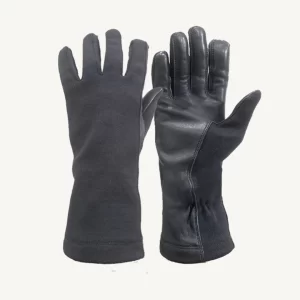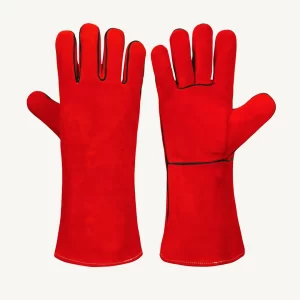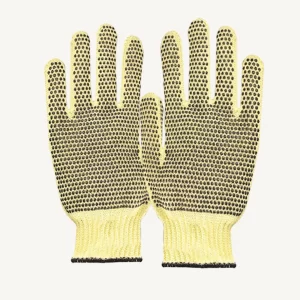In today’s fast-paced world, it is crucial to prioritize our health and safety, especially when it comes to protecting our hands. In my cases i personally noticed that most of my colleagues and many people around me use helmet for head, use socks for safety of foots but did not use gloves for safety of there hands in most of the cases. That’s how they ignore the importance of gloves.
Our hands are intricate tools – filled with tiny bones, muscles, nerves and blood vessels that allow fine finger motions needed for nearly every job and life activity. Protecting your hands from work hazards with properly fitted, protective gloves is absolutely crucial to prevent damaging injuries and conditions.
In physically demanding professions particularly, quality safety gloves serve a vital role to shield skin and fingers from unavoidable dangers like abrasions, temperature extremes, irritants and impacts. This guide covers glove types, key features, and illustrates the immense importance of wearing safety gloves to maintain long term hand comfort, function and wellness while working.
Different Glove Types for Protection
Job sites and work environments contain an array of hand safety risks. Exposure over time can lead to chronic issues like osteoarthritis, dermatitis, or even fingertip amputations and debilitating wounds.
The right set of properly certified and tested gloves acts as a necessary barrier, defending skin integrity, promoting grip security and absorbing outside force energy. They are essential for avoiding acute trauma as well as preserving lasting hand use capabilities.
There are many work glove varieties engineered to safeguard hands based on the exact dangers present in frequent tasks and settings.
Leather Work Gloves
The premier option to shield against abrasions, minor cuts and thermal extremes are quality leather work gloves. Typically constructed using durable cowhide, goatskin or deer hide, leather provides effective armour against contact injuries like bruises, punctures or burns. Leather gloves are ideal multi-purpose protection for:
- Construction
- Manufacturing
- Welding
- Automotive Repair
- Heavy DIY Projects
When selecting leather work gloves, analyze thickness for the best robust defense. Premium leather gloves may integrate padded knuckle guards and adjustable wrist straps too for maximized security from force impacts and strains.
High-Heat Resistant Gloves
Working intensely hot materials like molten glass or iron requires specialized flame-retardant and insulated glove materials.
- Heat-dispersing leather
- Durable Kevlar lining
- Thermal nonwoven batting
- Reflective outer layer
These attributes allow high-temperature glove models to withstand contact on surfaces over 1000°F, protecting hands and also lower arm areas from scalds or burns.
Cut-Resistant Gloves
Sharp processing equipment and razor materials can effortlessly slice unguarded skin and tendons. Cut-resistant gloves are vital when metal shearing, using exacto blades or handling glass during jobs like:
- Construction site debris clearing
- Component manufacturing
- Automotive repair
- Food preparation
- Warehouse supply handling
The premium cut protection gloves integrate high performance polyethylene, fiberglass and even steel mesh linings within the fingers and back to prevent deep lacerations from bladed objects.
Anti-Vibration Gloves
Extended use of power drills, concrete breakers, chainsaws and other vibrating tools can damage small sensory receptors in the fingers leading to chronic pain and reduced stability termed white finger disease.
Viscoelastic glove inserts along with ergonomic designs absorb and dampen energy transmission from high frequency oscillations that typically disturb finger bones, joints, arteries and nerves. These features provide necessary relief for regular users of landscaping equipment, heavy machinery and power tools.
Chemical and Liquid Resistant Gloves
Caustic cleaning agents, toxic pesticides, waste fluids and other chemical exposures quickly irritate and inflame unprotected skin. Both disposable latex and reusable nitrile gloves safeguard against transferring dangerous liquids, solvents or substances through their fully waterproof barriers.
Chemical handling or decontamination gloves also integrate thicker layers to withstand corrosive splashing while cleaning out tanks or processing compartments with highly acidic/alkaline solutions.
Electrical Insulating Gloves
Any electrical systems maintenance or repair requires fully insulated electrical hazard gloves. Rubber and synthetics negate current flow, preventing electrocution through microscopically thin latex or leather unable to block electric shock transmission through moisture pathways.
Certified insulating gloves must pass stringent dielectric, inflation and inspection tests to earn approved ratings stopping current for specific voltage maximums. Proper storage and inspection by qualified professionals ensures electrical safety barriers remain fully intact.
This spectrum represents common glove types engineered to handle specialized dangers. Additional models cater to cold work environments, tactical missions, medical emergencies and more.
Combine protective equipment like safety glasses, hard hats and durable work boots along with the best fitting glove designed directly for your occupational, weather and project risks.
What Glove Features Matter Most?
All protective work gloves are not equal. Along with pertinent shields just outlined for assorted hazards, ideal safety gloves also incorporate these attributes:
Secure Wrist Seal
A complete seal against the wrist and lower forearm protects vital inner veins and sensitive tendons from contamination exposure or irritation. Longer cuffs and adjustable wrist straps promote total coverage.
Optimal Dexterity
Precision motions should not feel encumbered. Finger grip pads made from breathable textiles, high dexterity seams and pre-curved shaping together retain natural mobility for tasks requiring fine motor skills.
Durable Palm Padding
The palm zone withstands continual abrasion during use. Durable leather and rubberized overlays reinforce high friction areas to prevent premature wearing along inner digits and palms.
Weatherproofing
Outer glove layers must repel liquids, stop water intrusion and withstand temperature extremes based on environmental conditions.
Insulative linings, waterproof membranes and sweat-wicking finishes maintain interior hand comfort across seasons.
Strong Grip Ability
Loose tools turn hazardous if handles twist or slip during force exertions. Rugged grip enhancers like silicone dots, tactile geometries and anti-slip polymer coatings allow safe object control.
Assessing safety credentials plus key protective and performance features allows smart glove selection for your unique risks and responsibility demands. Combine with comprehensive hand safety protocols emphasizing prevention.
Why Gloves Matter – Preventing Hand Injury
Hand trauma occurs more frequent than any other workplace wound. A large study found over one-third of documented injuries across multiple trades involve hands/wrists. Occurrence is 4X higher than head/neck and over 7X greater than trunk areas.
Without reliable barriers, repetitive tasks grind away skin defenses. Ordinary work materials also turn threatening when handling daily – hot surfaces scald, chemicals corrode, blades cut, vibrations damage nerves.
The nimble architecture packed into hands and fingers explains increased vulnerability. But productive comfort should never mean sacrificing safety. The right gloves act as an integral shield – mitigating contact pressures, securing grip stability and absorbing energies from sudden traumatic impacts.
While complete prevention is unrealistic on active job sites, wearing properly tested protection reduces the prevalence and severity of hand injury according to collected data:
Abrasions – Up To 95% Reduction
Friction against wood, tools and abrasive surfaces tears through the thin epidermis layers on fingertips and knuckles leading to painful wounds vulnerable to infection. Quality leather and textile gloves stop this occurrence, great lowering abrasion incidents.
Lacerations – Over 85% Decrease
Unprotected skin offers no defense against debris shards, sheet metal edges or processing blades. Cut-resistant gloves incorporating durable fabrics, high performance polyethylene, steel and fiberglass fibers halt deep penetration trauma against aggressive sharp objects.
Crushing Injuries – 60% + Rate Drop
Fingers and wrists contain a high density of fragile bones that fracture under excessive impacts from sledgehammers, falling objects and pin points. Reinforced glove padding absorbs and disperses contact forces instead of tender finger tissue.
Thermal Burns – Up To 80% Reduction
Uninsulated skin instantly blisters and chars when exposed to extreme heat energy from molten metals, ovens or plasmic sparks. Flame-retardant leather, aluminized outer coatings and thick insulating liners prevent this by blocking heat transfer – lowering burn incidence.
Chemical Irritation – Nearly 100% Prevention
Toxic solutions rapidly permeate pores and dissolve proteins when spilled on skin. Latex and nitrile coatings are impermeable to most corrosive liquids – almost fully eliminating chemical transferral to hands.
The percentage of hazard reduction will vary based on work zone factors and glove material strengths. But collected evidence confirms that wearing properly rated protection substantially controls hand accident frequency and severity versus unguarded exposure.
Hand Injuries Create Lasting Impact
Beyond just the acute trauma itself, hand injuries initiate a cascade of negative consequences – absenteeism, permanent disability, chronic pain and even job loss. These outcomes strain families, companies and the broader economy with amplified societal burdens.
Missed Work Days & Lost Wages
Lacerations, fractures and burns often require medical intervention plus stitches, casts or frequent dressing changes initially. Later, wound sensitivity, reduced mobility and lingering inflammation hamper production through lengthy healing periods or revised duty restrictions. For affected workers this directly lowers quality of life missing paychecks.
Psychological Distress
Serious hand injury also takes mental health tolls, especially soon after the traumatic event. Functional loss and relying on others triggers anxiety, depression and post-traumatic stress symptoms in 1 out 5 cases per collected data. Counseling and peer support aids coping
Conclusion:
No matter what your industry is, you cannot ignore the importance of gloves. Safety work gloves keep your hands safe from various injuries, such as cuts on fingers, burns during welding or cooking, and other related work, especially if you are using insulator work gloves. In short, it is very important to use work gloves after identifying your industry and choose suitable work gloves according to your specific needs.
To utilize work gloves properly in a long run you should professional gloves manufacturer. Recognized as a top gloves manufacturer, delivering superior quality, innovative designs, and trusted safety solutions worldwide. You can also read our blog on why we choose the gloves manufacturer?







